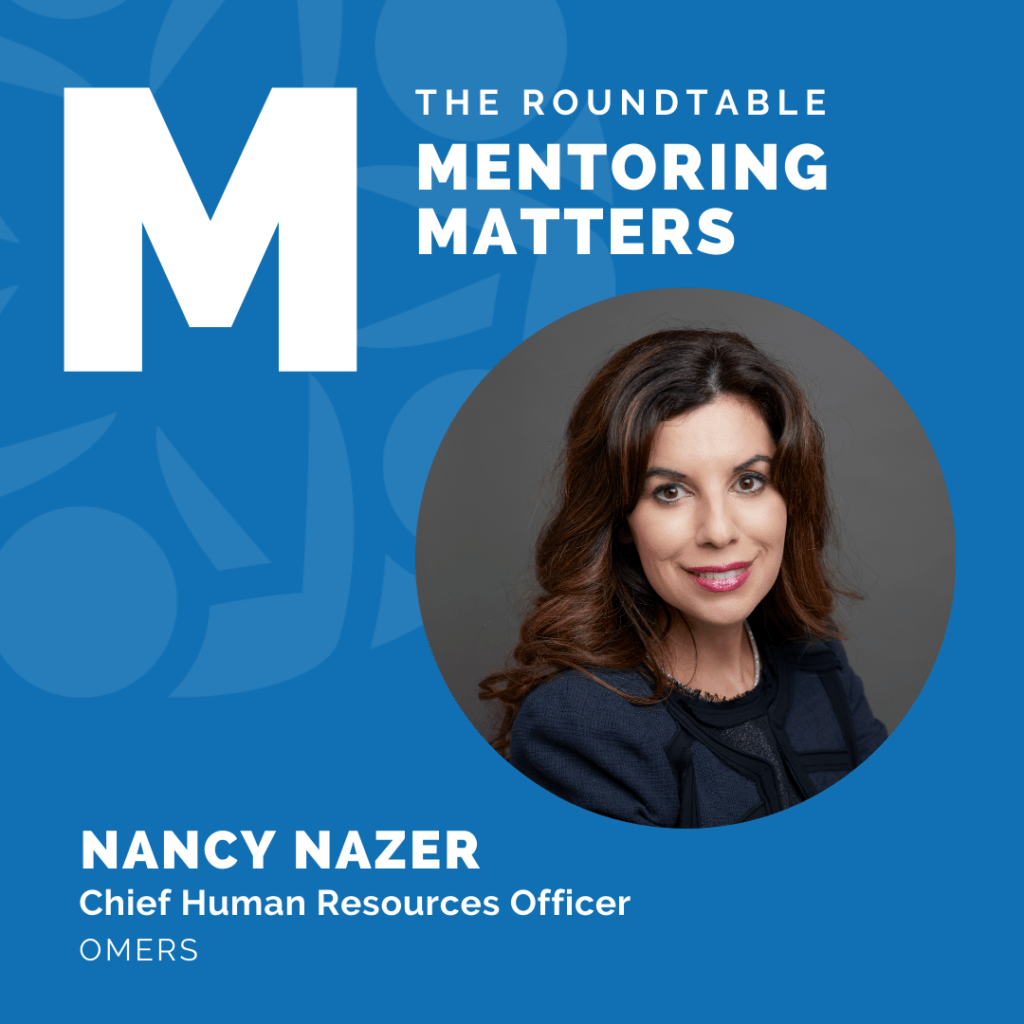Roundtable Member, Nancy Nazer, Chief Human Resources Officer at OMERS, shares strategies for influencing people and building trust and equity in a new organization. You can also download the PDF here to read later.
Q: I recently moved from an organization that I had worked at for the past 15 years because it became apparent that I had hit a ceiling with respect to upward movement. I moved to a role in a different organization, but I underestimated the trust and equity I had built up at my previous organization. I’m finding it very challenging to influence people, my peers in particular. Any advice?
Nancy’s Point of View
I’ve made three large moves in my career, often being brought in to lead massive transformation initiatives, and I’ve had the greatest impact being both adaptable and highly engaged with my team. When you move into a new organization, it’s important to have a clear vision and direction, but is equally as important to ensure you are actively listening to those around you.
The key mindsets and skillsets that I believe have served me well throughout my career, and through periods of transition, are:
- How you give trust.
- How we show our own vulnerability and willingness to learn.
- How you ignite belief and excitement in the journey and bring people along with you.
- How you build and reinforce an adaptable mindset and approach to work.
1. How You Give Trust
Trust is really about others, and what we feel about them. Building trust can be hard, as we each have our own trust equation to some extent, but trust serves as the foundation for building strong, resilient relationships. We must also recognize that it takes time to build trust.
There are four main pillars we all look for, and lean on, when building trust with others:
- Congruence – Does what you say align with what you believe, and what you do?
- Reliability – Are you demonstrating results? Are they consistent?
- Acceptance – Do you accept everyone on the team for who they are?
- Openness – Are you able to speak honestly? Are you truthful and clear with your intentions?
Everyone will lean on one of these pillars more than another, but all four are necessary when building trust. As a leader, you must know your own preferences, as well as those around you.
When thinking about yourself, also consider if you are an individual who gives trust, or one who expects others to prove it. The most effective way to lead and to build productive relationships, is by giving trust instead of making others earn it. Think of it a bit like a bank, trust is the currency sitting in your account. Is your account full enough?
2. How We Show our Own Vulnerability and Willingness to Learn
Resiliency, grit, and empathy are valuable traits for a leader to have, but perhaps most important is your ability to show vulnerability. These days, it’s not just about your expertise as a leader, but your ability to admit mistakes.
Spend some time reflecting on the following questions:
- How do you right wrongs when they occur? Do you apologize?
- Do people know where you stand?
- Do you create transparency with your team? What about with your peers?
- Do you hold yourself accountable for the way you behave? Are you willing to receive unsolicited feedback when you act or behave in a way that is counterproductive to the team?
Being able to admit your own fallibility creates a safe space for your peers and team to do the same, and helps to build trust, loyalty, and drive innovation.
3. How You Ignite Belief and Excitement in the Journey, and Bring People Along with You
To bring people along with you, you’ll need to spend time reflecting on how you engage and communicate with those around you, whether it is your peers or your team.
For me, to do this effectively, there are three steps:
- Be curious
- Ask questions
- Listen to what others have to say
It’s also important to be humble, and not make assumptions. It’s easy to focus on your vision, or on showcasing the depth of your expertise, but being singularly focused can be isolating to those around you. The easiest way to build a strong relationship with your team and your peers, is by actively listening to them, and involving them in the conversation from the start.
After a conversation, or a meeting, try taking a moment to reflect on how you communicated.
Ask yourself:
- Did I listen first? Did I allow everyone to speak, without interruption?
- Did I focus just on telling, or pushing my own interests?
- Did I allow space for those in the meeting to argue and debate, to find the best way forward?
Now more than ever before, it’s important to value and encourage diversity of thought. Everyone has something to contribute, and by working alongside others you can build a strong team around you. Working together to build goals, drive shared values, and make decisions will begin to solidify the trust you need to build influence. It also helps make working with others easier, and more efficient.
4. How You Build and Reinforce an Adaptable Mindset and Approach to Work
In organizations today, adaptability is key. Coming into an organization as a newcomer, it’s important to adapt to others and work within the dynamics of the organization.
As leaders, we must focus on:
- Your expectations – are you forcing others to adapt to you? Are your intentions clear?
- How you show up – are you being a force, when you should be part of the solution?
- How you recognize others – Celebrate the small steps and successes as you go.
Meet Nancy Nazer
Nancy Nazer is Chief Human Resources Officer at OMERS and joined the organization in her role, she leads all aspects of human resources for 3,000+ team members globally, including the company’s People and Culture strategy. Nancy’s passion and pride is supporting and developing people. She is a values-driven leader and a certified coach who provides ongoing coaching and mentoring for leaders across the organizations where she has worked.
Nancy’s work has been recognized by the Conference Board of Canada, Gartner Corporate Leadership Council and the Brandon Hall Learning Awards. She is frequently published and quoted in trade publications. She is a member of the Strategy Committee for Holy Trinity School. She holds a Master’s degree and a Ph.D. from the University of Toronto and is married with two children.




